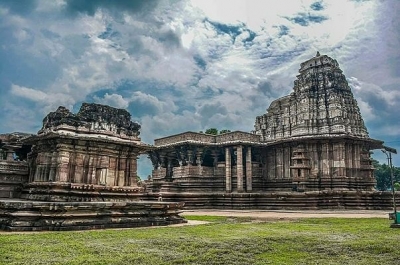
In July 2021, two new Indian sites were included to the UNESCO World Heritage List – the Kakatiya Rudreshwara (Ramappa) Temple, Telangana, and Dholavira: A Harrapan City, Gujarat Popularly known as the Ramappa Temple, Rudreshwara is located in the village of Palampet in Telangana. It is the main Shiva temple in a walled complex built during the Kakatiyan period (1123-1323 CE). The distinctive Vimana of the temple is made of lightweight porous floating bricks, which reduced the weight of the roof structures. The ancient city of Dholavira is one of the most remarkable and well-preserved urban settlements in South Asia dating from the 3rd to mid-2nd millennium BC. Discovered in 1968, the site is set apart by its unique characteristics, such as its water management system, multi-layered defensive mechanisms, extensive use of stone in construction, and special burial structures, says the UNESCO website.
The distinctive Vimana of the temple is made of lightweight porous ‘floating bricks,’ which reduced the weight of the roof structures. The building features decorated beams and the temple’s magnificent sculptures illustrate regional dance customs and Kakatiyan culture. The site is located close to the Ramappa Cheruvu, a Kakatiya-built water reservoir, placing it in a unique natural setting of the surrounding forested areas and agricultural lands.
The ancient city of Dholavira is one of the most remarkable and well-preserved urban settlements in South Asia dating from the 3rd to mid-2nd millennium BCE (Before Common Era). Discovered in 1968, the site is set apart by its unique characteristics, such as its water management system, multi-layered defensive mechanisms, extensive use of stone in construction and special burial structures. Of note is also the art associated with the city – artefacts of various kinds such as copper, shell, stone, jewellery of semi-precious stones, terracotta, gold, ivory have been found at the site. In addition, the interregional trade links associated with Dholavira, have also been acknowledged as contributing to the shared heritage of humanity.
Credit : UNESCO
Picture Credit : Google




